by Jeremy Naydler
This article was first published in New View, 93 (Autumn 2019).
Has the Digital Revolution Gone Too Far?
Many people are now questioning where the Digital Revolution is taking us and, more importantly, how we should respond to it. Like the French Revolution, the Digital Revolution was welcomed at first. To many, the transition from analogue to digital technologies that began in the 1970s – for recording sound, photography, communications and so on – seemed like a quality improvement. Digital technologies belonged to the new computer age, and enabled far greater accuracy and control to be brought to bear on our dealings with the world. But there is a growing sense of apprehension today about the extent to which the Digital Revolution and its wireless networks is altering the very fabric of our lives, with new technologies seeking to bring human beings and machines into ever closer relationship, along with the prospect of the world we inhabit becoming an increasingly hybrid ‘cyber-physical’ world.
The current rollout of 5G (the fifth generation of wireless communication networks) has concentrated minds, and aroused unprecedented levels of anxiety about the direction the Digital Revolution is taking. It can seem reminiscent of that moment in the French Revolution when, as the guillotine was first rolled out, the initial euphoria subsided and no one could any longer feel safe. 5G will bring about a massive intensification of the electrosmog that has accompanied the growth of wireless communications. It will endow Artificial Intelligence systems with even greater power and autonomy, affecting every aspect of our lives. Its extremely rapid rollout, without any prior scrutiny of its potential health effects or environmental impact, is symptomatic of the Digital Revolution having acquired, like the French Revolution before it, a momentum of its own, beyond the constraint of any rational or moral consideration. Where is it taking us? Towards what end? What goal? And in the service of which genuine human needs?
This article is an attempt to explore how we might work towards a spiritual response to the ever more pervasive technologisation of our lives. Whatever else we do, whether through protest, political action or simply through taking measures to shield ourselves from intrusive electromagnetic fields, we also need to find ways of strengthening ourselves inwardly, so that we can hold our ground and keep standing humanly in the face of the very powerful forces that threaten to undermine essential human values. These values cannot be understood in isolation from our place in nature and the greater natural order to which we belong. The tendency of the Digital Revolution is to dislocate us from these values, and from the dimension of the sacred, both within ourselves and within nature. How, then, can we meet the existential threat posed by extreme technologisation, and recover the sacred ground that we need to stand on? How can we work towards a truly human future that, rather than creating yet more pollution and toxicity, brings blessing to the natural world in which we live?
Electromagnetism and Light
Our current situation needs to be seen in context. Both the saturation of the atmosphere with electromagnetic radiation and the development of Artificial Intelligence systems are relatively recent phenomena. Wireless transmission only began towards the end of the nineteenth century. Prior to this, the only phenomena of electromagnetism that people were aware of were thunderstorms and sunlight. But neither were regarded as electrical until the eighteenth and the nineteenth centuries respectively, when first lightning and then light were interpreted as electrical phenomena. We are inclined to forget that it was not until the late nineteenth century that the “electromagnetic spectrum” was discovered: before that, no one suspected that it existed. Light was the actuality in this pre-radiofrequency world. It totally filled the atmosphere, and radiant electricity was completely absent (fig.1).
But if light was the actuality, then we must also understand that from time immemorial, this light emanating from the sun and flooding our world each day was experienced as bearing within it a spiritual power. If we go back to ancient Egyptian times, we find abundant evidence of a profound sensitivity to the intrinsically spiritual nature of light. Numerous sacred hymns declare that the light emanates from the life-bestowing sun-god Ra. The omnipresence of light signified that the world was immersed within the divine. We meet a similar awareness in the sacred literature of ancient Israel, where we read how light is the garment that God wraps around himself. This perception of light as the medium through which the divine manifests in the sense-perceptible world was readily taken up in the Christian era. For Dionysius the Areopagite and the mainstream Christian tradition, light was understood to be an image of the divine goodness, which is revealed in and through it. Beyond ancient Egypt, Israel and the Christian tradition, many of the world’s cultures and religions attest to this primordial human experience.

Figure 1 -- Diagram of light dominating the atmosphere (author’s diagram).
This sacred status of light was devastatingly challenged in the 1860s, when the idea of the electromagnetic field was introduced into scientific circles. According to James Clerk Maxwell, who proposed the first comprehensive theory of the existence of an electromagnetic field, light was just one of many different frequencies of radiant electricity. It should be regarded as nothing more than a disturbance within the greater electromagnetic field, of which it occupies only a tiny portion, and its manifestation is entirely in accordance with electromagnetic laws. Maxwell’s theoretical formulations were soon experimentally verified by Heinrich Hertz, who declared in 1889 that “light of every kind is an electrical phenomenon”.
From this time on, radiant electricity gradually began to fill the atmosphere as more and more frequencies in the electromagnetic spectrum, each one oscillating at different rates per second, were artificially propagated and utilised for communications. This began with initial experiments in wireless transmission in the late nineteenth century and the first long-wave public radio broadcasts in the 1920s, evolving into FM radio broadcasting and TV in the 1950s, the first compact handheld mobile phones in the 1980s, smartphones in the 2000s and now the creation of the “cyber-physical” Internet of Things with the rollout of 5G in the 2020s (fig. 2). As each new technology was deployed, higher and higher frequencies oscillating at higher and higher rates with shorter and shorter wavelengths, were used so – broadly speaking – we see a movement (from left to right in fig. 2) from low frequencies to high, from long wavelengths to short as we move through the twentieth, and into the twenty-first, centuries. Meanwhile, natural sunlight is reduced to a relatively insignificant narrow band of frequencies in the spectrum of electromagnetic, i.e. essentially subnatural, energies.
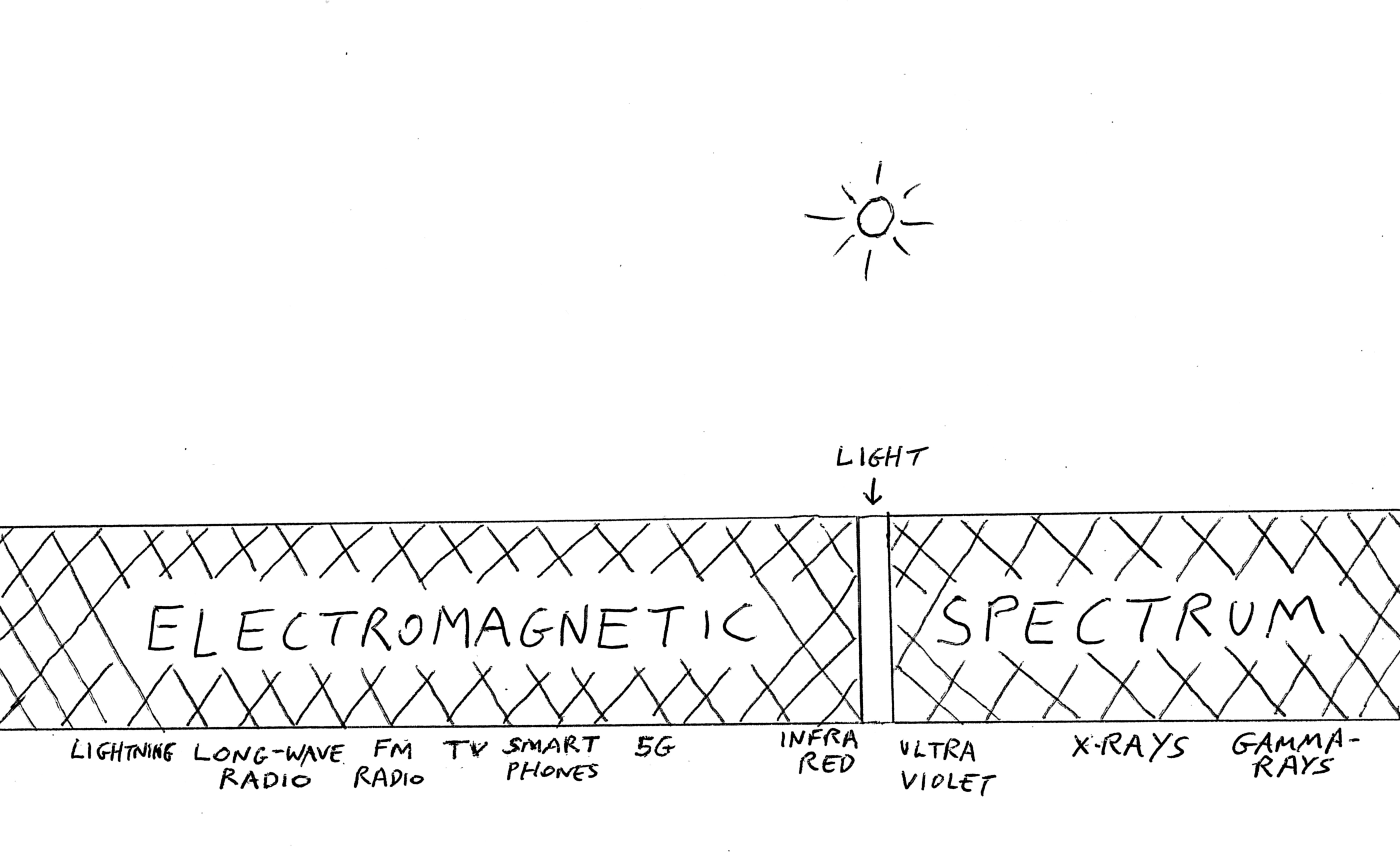
Figure 2 -- Diagram of electromagnetism dominating the atmosphere (author’s diagram).
In the utilisation of electromagnetic spectrum, we also see a movement from initial sound-broadcasting to the transmission of visual content with the invention of television. The illuminated screen of television introduced human beings to a kind of Otherworld that could be regarded as both real and unreal at the same time. When desktop computers acquired a similar screen interface in the 1980s, this gave the user the ability to engage much more fully with machine intelligence. It presented to the user a window into the inner world of the computer, and the electric light that glowed from this window invited the human being in. The electric light was a simulation of natural sunlight, but it exercised a powerful attraction over the human soul because light, especially when it shines through another medium, has an irresistible allure for us. For this reason, the illuminated screen was one of the most psychologically powerful innovations in computer design.
In the desktop computer, and subsequently the laptop, tablet and smartphone, the screen became an entry point into a parallel universe, where human beings would have a growing amount of experiences: communicating with friends, finding things out, conducting business, buying and selling things, and immersion in the fantasy worlds of computer games. Human thoughts, feelings, desires, and fantasies would increasingly be lived out in the arena of machine intelligence. In Figure 3, the artificially illumined screen hangs in the sky, with clouds in the background, and the electric glow that emanates from it has usurped the role of sunlight. It is an electronic imposter of the sun. The picture depicts the replacement of the natural light of the sun by the electrically generated light of the computer screen, which now commands the allegiance of the human soul, and casts a spell over human consciousness.
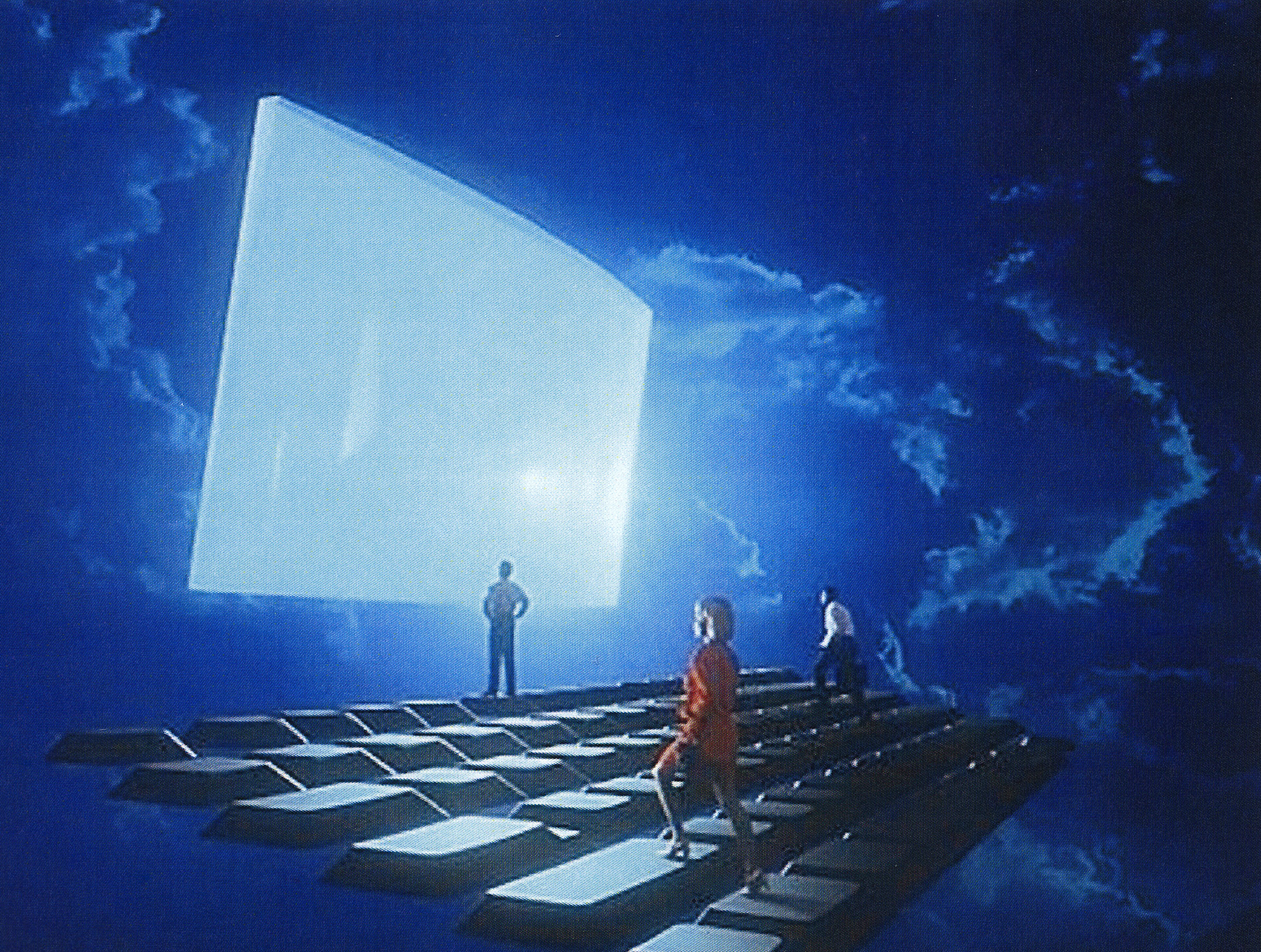
Figure 3 -- The lure of the screen.
Intelligence and Artificial Intelligence
But what casts the spell is not just the light, it is the peculiarly powerful machine intelligence that it makes available to us, and which seems to become more and more indispensible to our lives. Machine intelligence has the ability to engage us, and to draw us into all that it can do. It is significant that the first electro-mechanical computer was invented at the same time as the first experiments in generating electromagnetic waves and then wireless transmission. Just as it is important to understand how light was captured by electricity, so we must also understand how intelligence was captured by machines.
In the Western philosophical tradition, intelligence has long been understood as the distinctively human ability to gain insight into the essence of things. According to both Plato and Aristotle, intelligence (in Greek, nous) is a divine endowment that makes human beings active participants in the cosmic spiritual order. Through the gift of intelligence we are able to penetrate the outer appearance of phenomena and grasp their inner spiritual causes. It is, furthermore, a faculty within us which is independent of the physical body, granting us the experience of our own intrinsically spiritual nature. This understanding was transmitted into mainstream Christian philosophy and theology by St. Augustine, for whom intelligentia is seated in the heart and directed towards what is eternal.
By contrast the modern use of the word intelligence has become almost synonymous with computational ability, a view first advocated in the seventeenth century by Thomas Hobbes. For Hobbes, the activity of thinking is nothing more than making calculations. It was during Hobbes’ lifetime that the first mechanical calculators were invented, and he was well aware of the fact that his definition of intelligence was applicable equally to humans and machines. Defined in terms of calculative ability, intelligence loses its distinctively human attribute: it becomes in the end something merely mechanical.
The implication that thinking is essentially no different from computing – analysing data, and then making calculations based on this analysis – is the basis of the graph in Figure 4, published in Ray Kurzweil’s, The Singularity is Near (2005) – a book full of unnerving predictions about the increasing role of Artificial Intelligence in our lives. The graph shows the growth curve of machine intelligence since 1900, during the days of Hollerith’s electro-mechanical computers, through the first electronic computers of the 1940s and 1950s, the personal computers of the 1980s and the early smartphones of the 2000s. During this period both computer memory and processing speeds swiftly increased and could be incorporated in devices commercially available on the mass-market, so the price of machine intelligence rapidly came down. This meant that the amount of “calculations per second” that could be purchased for $1000 rose exponentially. Kurzweil predicted that it would continue to rise to the point at which computers equalled and then exceeded human intelligence.
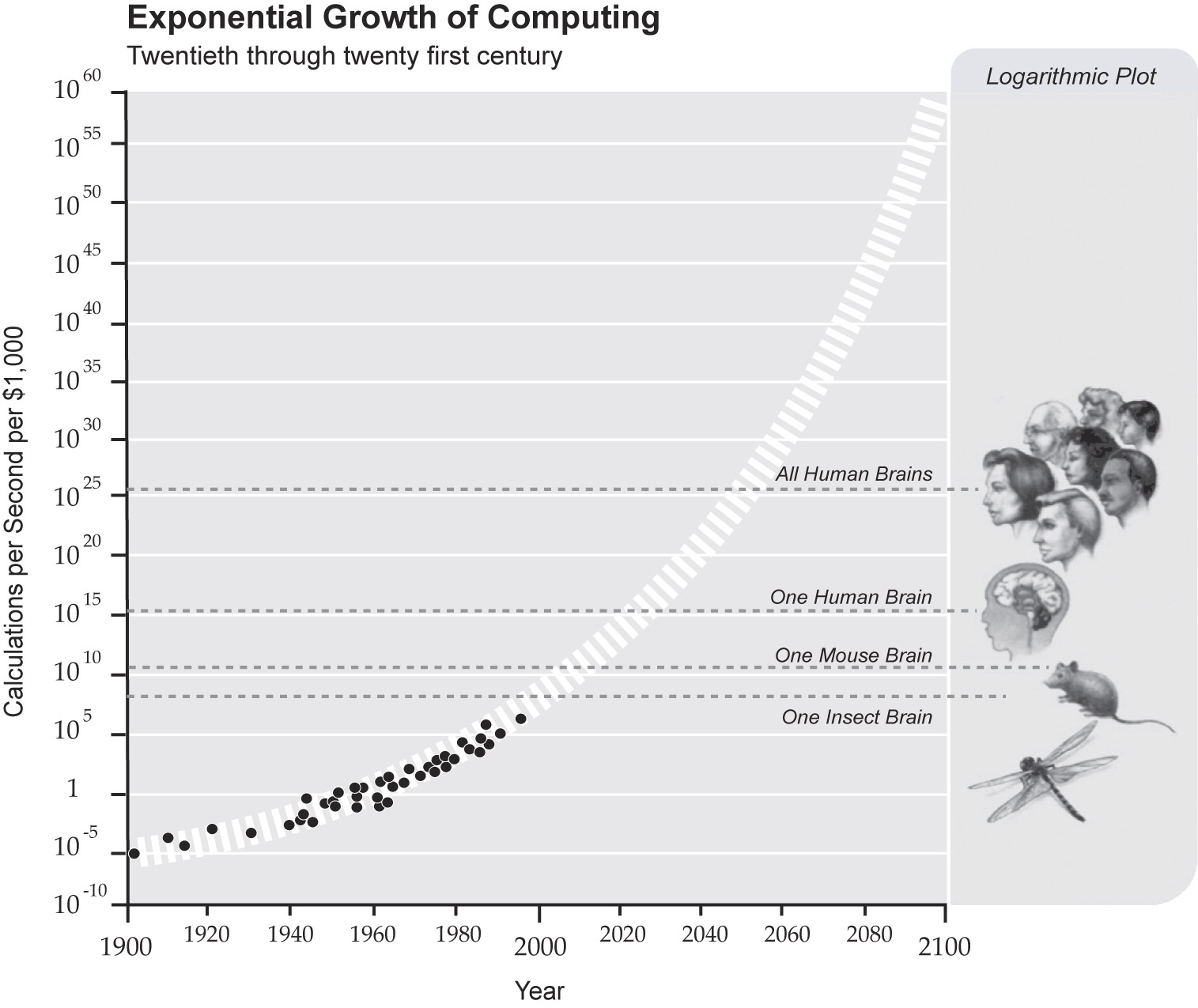
Figure 4 -- Growth of computing according to Kurzweil, The Singularity is Near (2005)
In the graph, machine intelligence is correlated with the intelligence of insects, mice and human beings on a qualitatively indistinguishable continuum. What distinguishes the intelligence of these different creatures is the number of calculations per second each can make. Just as light was absorbed into the electromagnetic spectrum, and defined in terms of a specific number of oscillations per second, so human intelligence merely functions at a certain level of calculations per second. According to the graph, this is a staggering number: several quadrillion (a number with fifteen zeros after it)! Kurzweil predicted that there would be computers capable of such speeds by the year 2020. Where the graph is questionable, however, is not so much in the accuracy of its predictions but in its assumption about the meaning of intelligence. Never mind about the cost or the dates, to measure intelligence in terms of calculations per second has nothing to do with our conscious experience of thinking. Most people, given only one second, would probably fail to make just one calculation, let alone quadrillions! The graph assumes that intelligence can be correlated with electronic or electrochemical activity, but this is very different from our actual experience of thinking. From a phenomenological point of view, it is complete nonsense to define intelligence in this way. Nevertheless, this computer model of intelligence and of thinking has become paramount today. It is now a commonly held view that the brain is nothing more than a biological computer, and all human thinking is basically a calculative activity.
This view provides the rationale for the conversion of electrochemical processes in the brain into digital signals, all the better to work more closely with machine intelligence. Headsets that capture your thoughts and convert them into digital signals have been commercially available for some time. Through such technologies, humans gain the ability to interact with, and control, machines by the power of thought alone. As this technology becomes more prevalent, we can only assume that human intelligence will become increasingly enmeshed with Artificial Intelligence. So just as light was purloined by the electromagnetic theory, so we see human thinking hijacked by the reductionist view of human intelligence. Treated merely as an electrochemical process in the brain on the same spectrum as machine intelligence, and conceived as nothing more than “calculations per second”, the path is laid for the atrophy of the deeper spiritual capacities of genuine human intelligence.
How, then, can we reclaim for human intelligence a role that is independent of Artificial Intelligence, and based on an activity that is genuinely free and not simply subservient to the computer-dominated world? With the creeping pervasiveness of the Internet of Things, computational intelligence will be embedded in more and more objects with which we will interact on a daily basis. Therefore it is essential that we take steps to build up the truly human potential of thinking. As we shall see, these steps are closely related to the recognition of the spiritual nature of light.
Recovering the Relationship Between Light and Thought
The relationship between electricity and Artificial Intelligence is one of mutual interdependence. Artificial Intelligence cannot function without electricity. There can be no Artificial Intelligence without electricity, because – as we know – as soon as the power supply goes off or runs out, our computer or smartphone collapses into total inertness. Furthermore, our mobile devices, insofar as they communicate with other devices, receive and emit electromagnetic radiation. Likewise, the embedded sensors, transmitters and actuators crucial to the Internet of Things, and the new “cyber–physical systems” that 5G will enable, all function by receiving and transmitting radiant electricity. But just as Artificial Intelligence depends upon electricity as its medium, so at the same time electricity finds its fulfilment in Artificial Intelligence. Electricity rises to its highest level when it is digitised in binary code, for then it acquires intelligence, albeit only computational intelligence. Electricity and Artificial Intelligence should thus be regarded as two aspects of a single phenomenon. Figure 5 represents this relationship diagrammatically.
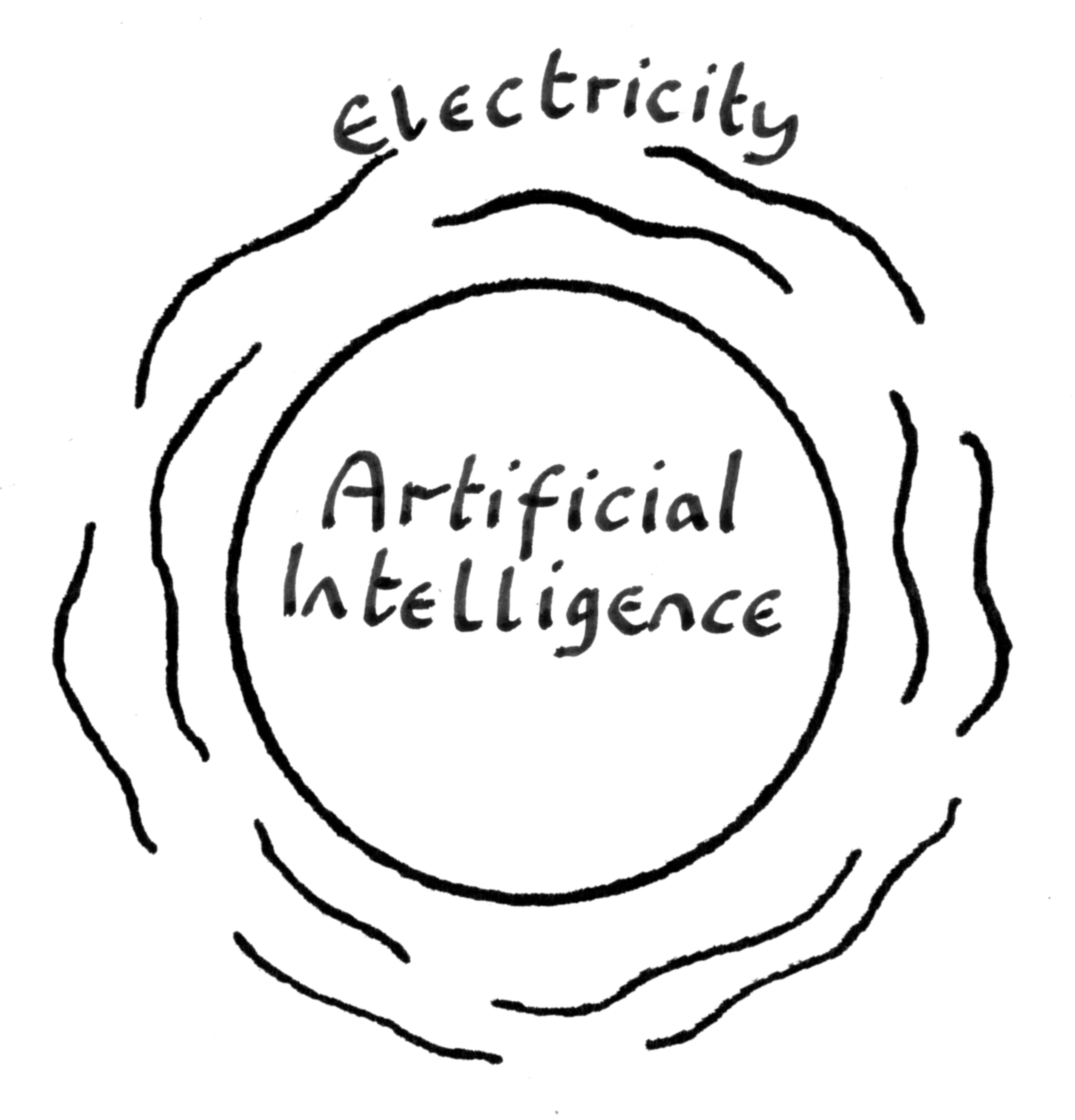
Figure 5 -- Electricity and Artificial Intelligence (author’s diagram).
This relationship of electricity and artificial intelligence has, however, arisen as a kind of mimicking of the relationship of light and thought. Figure 5 is in fact adapted from a diagram originally drawn by Rudolf Steiner in 1920 when talking about the relationship of light and thought. In Steiner’s diagram, the place of Artificial Intelligence is rightfully taken by thought and that of electricity by light (fig. 6).
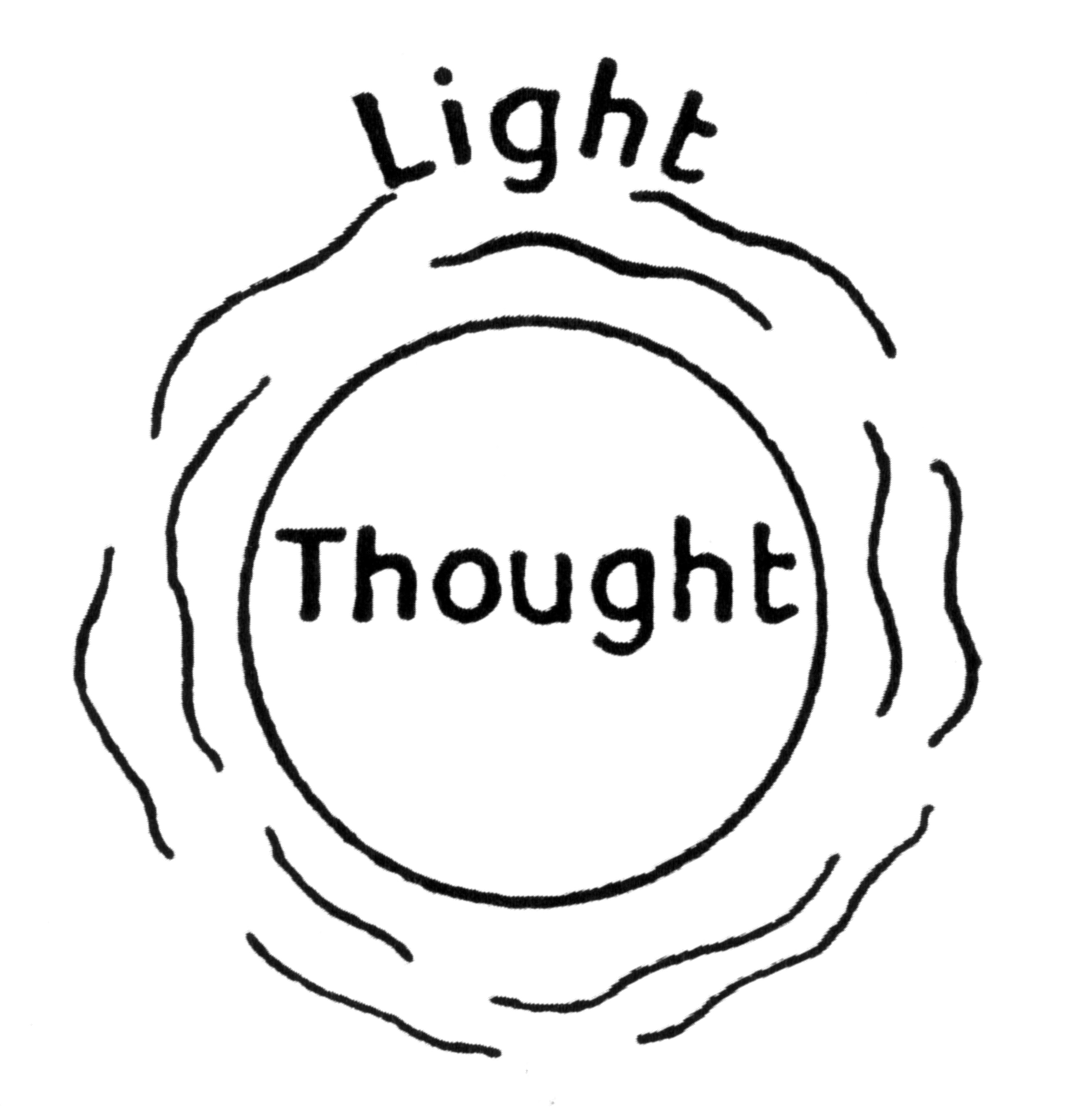
Figure 6 -- Rudolf Steiner’s diagram of light and thought.
When he drew this diagram, Rudolf Steiner’s explanation was as follows:
“We have the light in us. Only it does not appear to us as light because we live within it, and because while we use the light, it becomes thought within us… You take up the light in yourself which otherwise appears outside you. You differentiate it in yourself. You work in it. This is precisely your thinking: it is a working in light… Light and thought go together. They are identical, but seen from different sides.”
The idea that thought and light are intimately connected goes back a long way. Perhaps not surprisingly, we find it in Plato, who saw that they are really one and the same entity manifesting outwardly as light, and inwardly as thought or human intelligence (nous). For Plato, light and thought both emanate from the same source, which he called the Idea of Good. This connection with the Idea of Good may seem obscure to us today, but each morning we can (if we allow ourselves) feel the sunlit world to be illumining us with the power of goodness. Goodness streams through our bedroom window in the sunlight. And this same power of goodness can also be experienced inwardly as giving us the light of waking consciousness, with our ability to think, to know, and to understand.
This intimate relationship between thought and light was regarded as quite obvious by other ancient thinkers as well as Plato, for example Aristotle and Plotinus, and was also understood in the Middle Ages. It figures prominently, for instance, in the writings of Thomas Aquinas. In ancient and medieval times, thought itself was inwardly experienced as illuminating or shedding light on the world.
After Rudolf Steiner drew this diagram, he added more underneath it. The complete diagram is shown in Figure 7.

Figure 7 -- Rudolf Steiner’s complete diagram of the relationship between light and thought.
At the top, the microcosm of the human mind is shown as a small circle, which contains our thoughts. Steiner says that, seen with spiritual perception, these thoughts are radiating light. At the bottom, the macrocosm of the world is filled with light. But then Steiner says, seen with spiritual perception, this light which is spread out in the world reveals itself to be permeated with thought. Thus the light we experience in the world around us is permeated with thought. If we were to ask what is the thought-content that the light holds, philosophers in ancient and medieval times would say: the light holds the archetypal forms of all creatures. In other words, the inner organising principle of each creature – the spiritual archetype that makes it what it is – is intrinsically luminous. This view is entirely consonant with that of Rudolf Steiner who, in a lecture given ten years earlier in 1910, made the following statement:
“Every substance upon earth is condensed light. There is nothing in material existence in any form whatever which is anything but condensed light… Whenever you reach out and touch a substance, there you have condensed, compressed light. All matter is, in its essence, light.”
So the sense-perceptible universe is a kind of condensation of light in matter. In so far as matter receives the impress of thought, which is what makes each thing what it is, it also receives the impress of light. The diagram illustrates the fact that this impress is received from the cosmic periphery, which works inwards. But at the same time in each living creature the archetype works from within outwards. This seeming paradox points us towards how the forces of life, or the etheric formative forces, act – from the cosmic periphery inwards, and from the spiritual centre outwards (fig. 8). So there is an important overlap between light and the etheric realm: we meet the etheric in light.

Figure 8 -- From the cosmic periphery inwards, from the spiritual centre outwards (author’s diagram).
Light: a Bridge to the Etheric
One of the things that Steiner says about the nature of light is that although it is present in the world all around us, we do not see it directly, but we see by means of it. It makes things visible, but it is in itself invisible. So when we contemplate light we are contemplating something that, although present in the world, is essentially a spiritual presence. It can therefore be regarded as a kind of bridge that leads from the world perceptible to the senses to what is actually extra-sensory. It is a bridge into the realm of the etheric.
Light can be our entry point into the etheric because the energies of the etheric, that is to say the formative forces of life, are conveyed through the light; they live in the light. For Steiner, electricity is a force that is inimical to life: it can only animate machines, whereas light is the medium through which the formative forces of life pour into the world. This is something we can all experience, but only through a degree of inner effort, a diligent practice of contemplative observation. The attempt to reach this experience is a first step that we can take to counterbalance the dominance of electromagnetism in the atmosphere, through affirming a greater reality and investing our energies in the exploration of a more profound truth. If we are able to become more conscious of the etheric forces living in the light, this will give us the basis for reclaiming for the light its rightful domain, which is not the realm of electromagnetism but the realm of life.
The onus is entirely on us to work towards such a consciousness of the connection between light and the realm of life-forces. It requires that, instead of just taking light for granted, we deepen our relationship to it by, for example, observing the different moods of morning and evening light, and how dawn light differs from the light at dusk; by attending more closely to the constantly changing qualities and interactions of light and shade; by noticing how the varying moisture content of the atmosphere affects the quality of light at different times of day and at different times of year, and how the attributes of light are so very different on a cloudy or sunny day; by focusing on the degree to which light is reflected, transmitted, or absorbed by, for example, leaves and flowers. These are simple but subtle things to observe, but they can sensitise us to the living, spiritual quality of light.
On a sunny day, in particular, we may notice the contrast between how things appear when the source of the light is behind them and when it is in front of them. When backlit, leaves and petals can appear transfigured by the sunlight. It is as if their intrinsic radiance is revealed: then it does not seem so far-fetched to conceive of them as made of condensed light. They can become not just luminous but, as in the case of the tulip in Figure 9, actually transparent. At such moments, we may feel we glimpse the presence of spirit in the world of nature, for this can be a numinous experience that arrests our attention, as we contemplate in wonder. And then we may understand something about the allure of the backlit electronic screen: for is it not precisely this numinosity that the backlit screen seeks to replicate? But instead of drawing us into the living etheric world, it draws us into the lifeless electronic world. By immersing ourselves in such phenomena, we may begin to have an intimation of how light bears within itself powerful creative forces.
 Figure 9 -- Backlit tulip in Spring (author’s photo). Figure 9 -- Backlit tulip in Spring (author’s photo).
Coming Home to Thinking
If we consider the lower, macrocosmic part of Steiner’s diagram again (fig. 7), it suggests that the more we are able to immerse ourselves in the light, the more we might feel a kind of “homecoming”, for what we meet in the light as sensory experience we also meet within ourselves as an inner experience, namely thought.
If the light outside us bears within it the cosmic thinking that gives rise to all forms in the world, then it is this same element of thinking that we meet within ourselves, at the centre of our own inner life.
Thus human thinking would rightfully occupy a place in the centre of Steiner’s macrocosmic diagram, as implicitly belonging to the greater macrocosmic drama (fig. 10).
Outwardly, the cosmic logos wraps itself in the garment of light, while inwardly we may come to an experience of the same spiritual power as active in our life of thought.
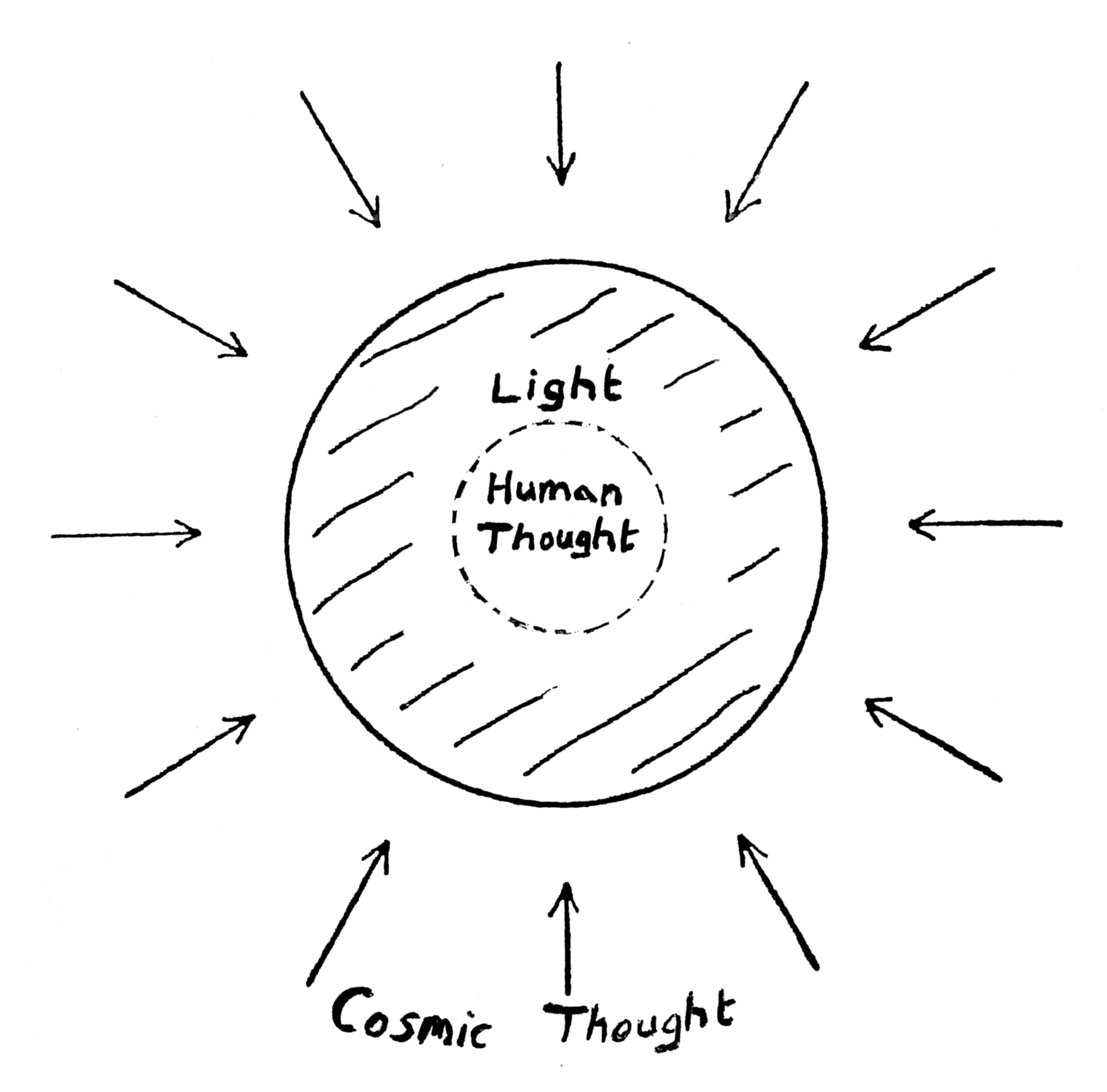
Figure 10 -- Light within cosmic thought; human thought within light (author’s diagram).
Like light, the activity of thinking is essentially spiritual, but it is nevertheless present in the sense-perceptible world. So, like light, thinking can also serve as a bridge between the world perceptible to our senses and the spiritual world. But it can only do this if we go beyond the commonly held view that thinking is just a “calculative” process of logical analysis and reasoning things out. That describes brain thinking, but brain thinking is not the essential nature of thinking. Any computer can be programmed to analyse data, but when we truly think we go beyond brain activity and we are active on the etheric level. As we have seen, the etheric works from the cosmic periphery inwards and at the same time from the spiritual centre outwards.
Applied to the inner life of thought, this entails, first of all, an act of centering, in which we place ourselves at the inner threshold where thoughts arise. Thereby, we are consciously engaged in the arising of the thoughts – in the act of giving birth to them. The activity of thinking is an opening to what is not yet formed, and giving it form. It requires that we free ourselves of our concepts and our favourite opinions. In this respect, it involves a process of unthinking, because it is the opposite of falling back on familiar patterns of thought, and it is nothing to do with analysing data, or sifting through information and making calculations. It is essentially an active receptivity to what arises from within.
But what we give birth to does not exactly arise from within us, in the sense of “from our own selfhood”. We cannot really claim it as our own. It comes from beyond our ego. We can have the strong sense that the source of our thinking is not really in us. It is more that we are in it: we are functioning within a greater mind. That is why Rudolf Steiner says that when we truly think the spiritual world “plays into” our thinking. It is a dialogue in which we are not alone. It is a communing with the spiritual world. Figure 11 depicts the paradox that the spiritual world within which we exist plays into our thinking from within us, and so we may experience our thoughts as arising from a sphere beyond our limited personality. This experience both gives us a taste of thinking as an etheric activity, and it also provides the experiential foundation for rejecting the reductionist view of human intelligence as merely computational. It is thus an essential counterbalance to the current tendency towards ever closer integration of human thinking with Artificial Intelligence systems.
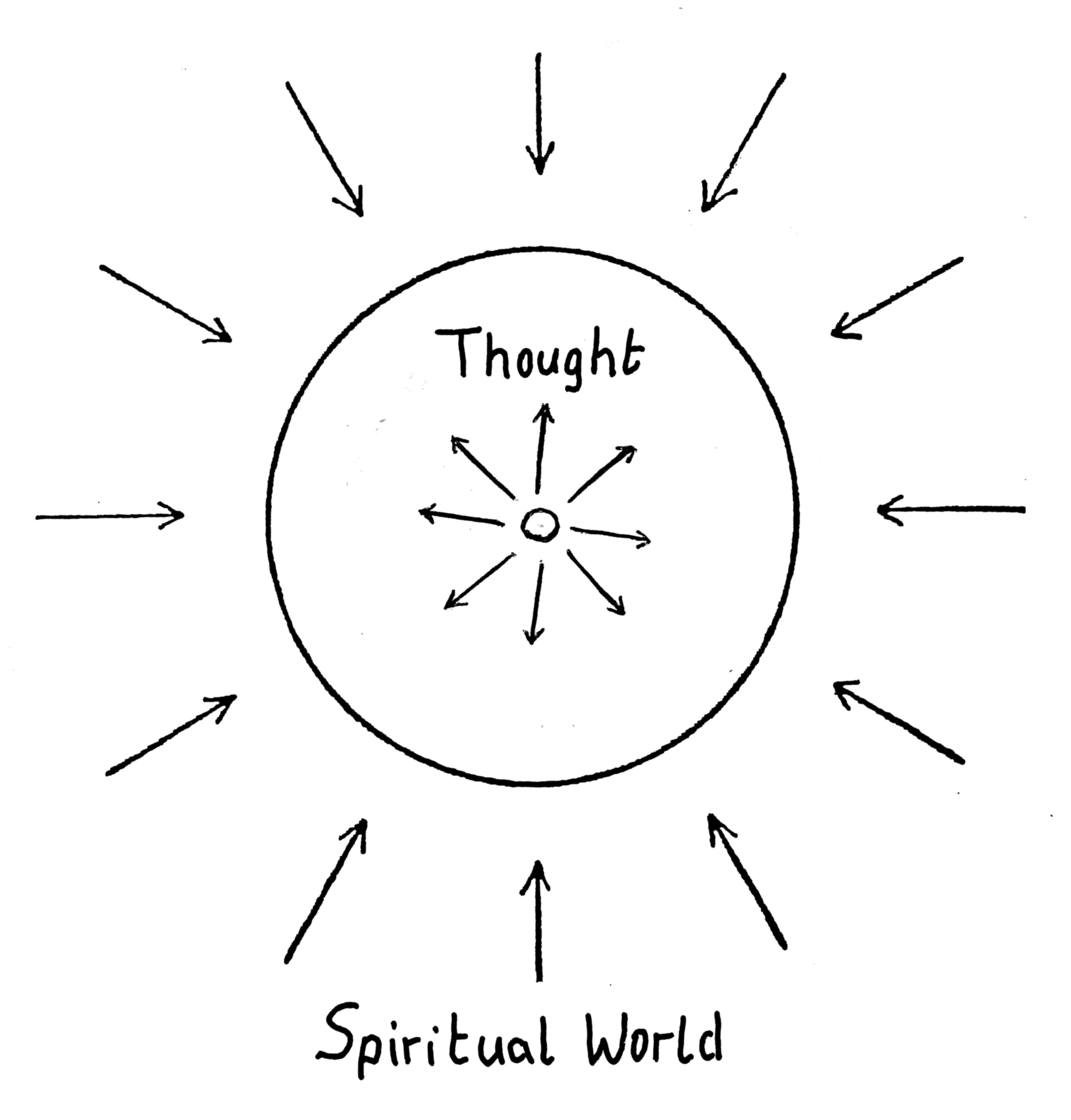
Figure 11 -- How the Spiritual World Plays into Thinking (author’s diagram).
Bringing Light to the World
I have suggested that by immersing ourselves in the living, creative forces borne by the light, we can offer a counterbalance to the saturation of the atmosphere with electromagnet radiation. Similarly, by deepening of our thinking to the point at which we experience it as a living spiritual activity we can counteract the tendency today of human thinking to become enmeshed with machine intelligence. There is a further vital step that we can also take, as a spiritual response to the influx of extreme technologies into our lives.
One of the most important statements that Rudolf Steiner makes about thinking as a spiritual activity is that it contains within it “the power of love in its spiritual form.” When we really engage in thinking – in living thinking – it is the power of love that we activate within ourselves. Herein lies a crucial difference between human intelligence and Artificial Intelligence. Human intelligence is intrinsically selfless, which is why it gives us the capacity to enter into the being of another with loving understanding. By contrast, machine thinking is loveless and disconnected from the world. It is locked into the darkness of solipsism, unable to radiate spiritual light.
Both the outer light surrounding us and the light of thinking within us share the same characteristic of intrinsic selflessness. The one illumines all things, great and small, ugly and beautiful, without prejudice; the other enables us through our understanding to illumine the being of another, again without prejudice. This is the power of love in thinking. It directs the light of thinking outwards towards the world.
The activation of this level of thinking within ourselves is our highest calling as human beings. By bringing to the world our loving attentiveness and the warmth of selfless understanding, we are actually bringing life-giving light to the world. And in so doing, we bestow a blessing on whatever this light illumines. In one of his meditative verses, Rudolf Steiner says that the world, without our consciousness of it, would become a frozen waste, empty of life. We could add to that: the more we surrender our consciousness to a world dominated by intelligent machines animated by electricity, the more the world will find only death.
Human beings have something vital, literally vital, to contribute to the world. When we can hold other creatures in the embrace of a loving perception and genuinely selfless understanding, then we are illuminating them; we are bringing light to them. And according to Meister Eckhart, when we illumine other creatures in our understanding, what we are doing is preparing them for their return to God. It is our deepest human vocation. This is beautifully illustrated in Greg Tricker’s painting of “St. Francis in the Snow” (fig. 12), in which the saint is portrayed fulfilling this specifically human vocation in a frozen winter landscape.
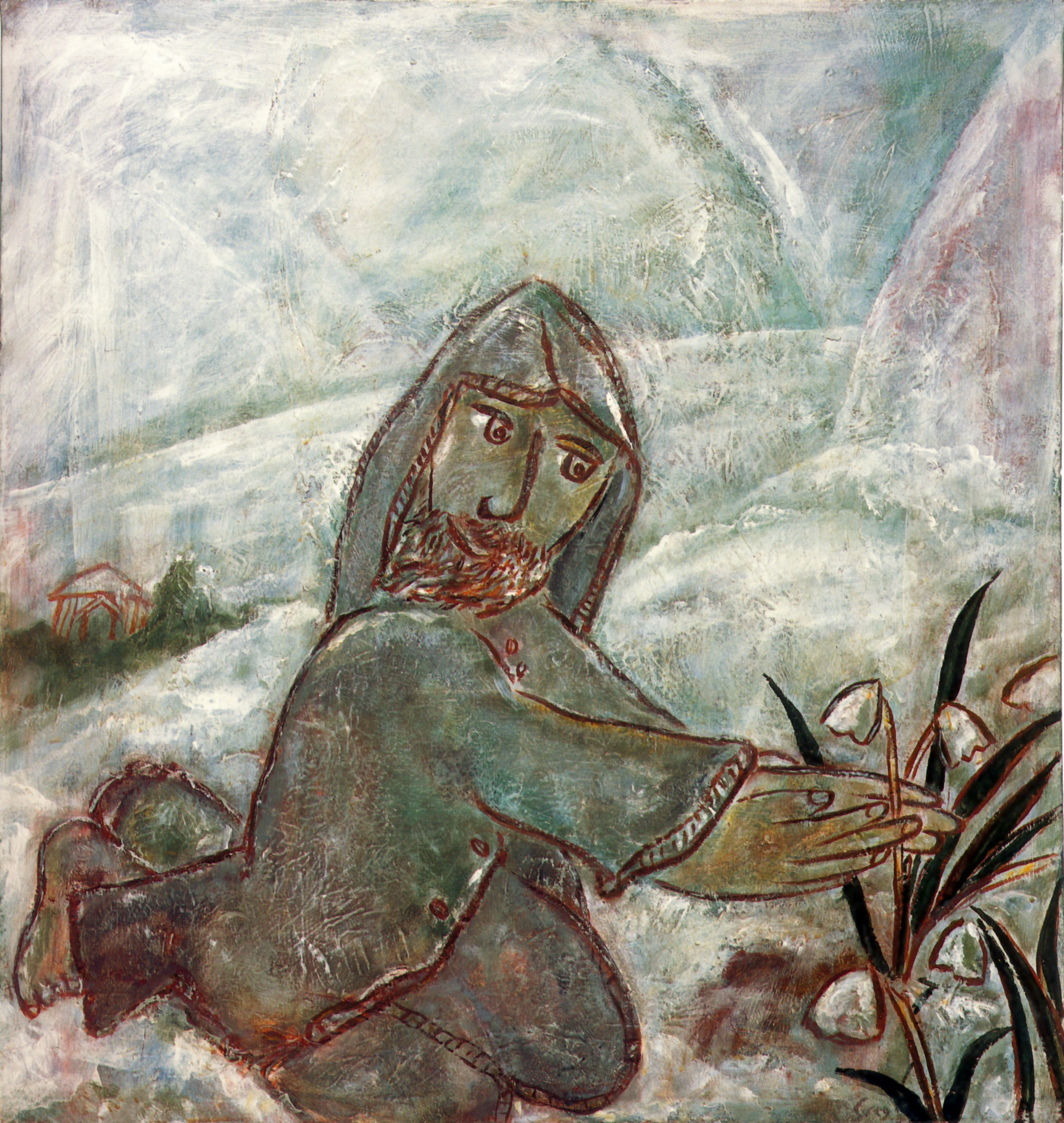
Figure 12 -- ‘St. Francis in the Snow’, by Greg Tricker.
Each of the three steps I have outlined involves building up our relationship with the light as a spiritual foundation of our response to the technological challenges we face. They will not, of course, stop the rollout of 5G, and after it 6G and 7G, nor will they prevent Artificial Intelligence from becoming increasingly pervasive. They should therefore not be seen as alternatives to political protest or the effort to raise consciousness of the dangers of extreme technologisation through reasoned argument based on scientific research. But, by helping us to find the sacred ground on which we can take our stand, they may be thought of as enabling us to place something on the other side of the scales, to counterbalance the negative forces that today assail humanity and menace the living Earth. To take on these forces, we need to fortify ourselves inwardly, and find strength to work towards bringing real blessing to the world.
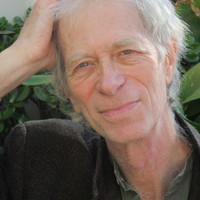 Jeremy Naydler is author of In the Shadow of the Machine: the Prehistory of the Computer and the Evolution of Consciousness (Temple Lodge, 2018). Jeremy Naydler is author of In the Shadow of the Machine: the Prehistory of the Computer and the Evolution of Consciousness (Temple Lodge, 2018).
Jeremy Naydler, PhD, holds a doctorate in theology and religious studies, and is a philosopher, cultural historian and gardener who lives and works in Oxford, England.
|


![]()









 Figure 9 -- Backlit tulip in Spring (author’s photo).
Figure 9 -- Backlit tulip in Spring (author’s photo).


 Jeremy Naydler is author of In the Shadow of the Machine: the Prehistory of the Computer and the Evolution of Consciousness (Temple Lodge, 2018).
Jeremy Naydler is author of In the Shadow of the Machine: the Prehistory of the Computer and the Evolution of Consciousness (Temple Lodge, 2018).